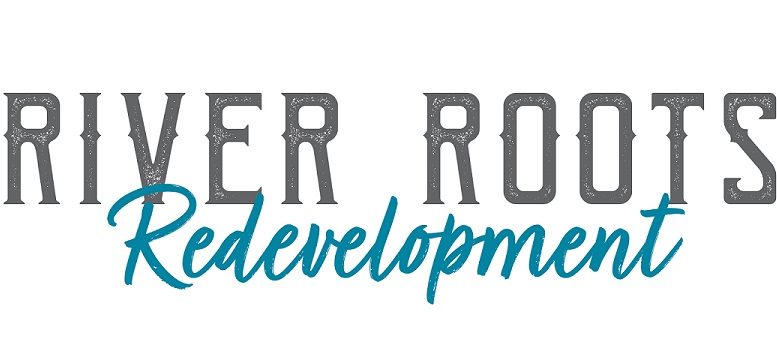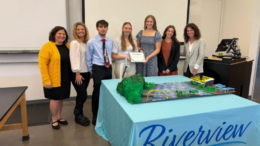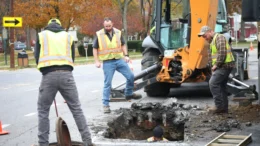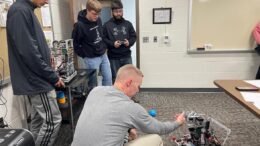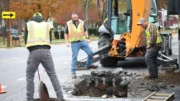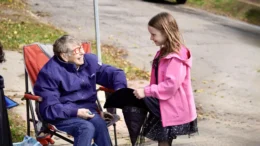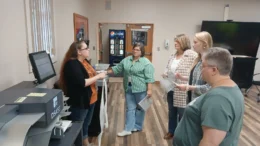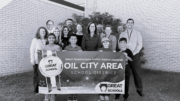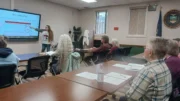Whenever solar comes up in conversation, something that I often hear is the concern about putting solar arrays on land that could be used for other things, particularly farm land. Sure, we can avoid this by putting solar panels on roofs, but is that the only way?
Enter agrivoltaics (or agrisolar, agrophotovoltaics, dual-use solar). Agrivoltaics is the dual-use of land for agriculture AND solar energy production. The things that make land good for agriculture–lots of sun, relatively flat, etc.–are also what makes land suitable for solar energy production. We can reduce the land use competition by making solar and agriculture work in tandem.
Solar panels can be placed in a field with livestock like sheep or cows who then graze around the panels, reducing or eliminating the need to mow or trim around them. The panels, in return, offer shade for the animals as well as electricity to power things like lights, fans, and equipment. It’s a kind of symbiotic relationship that can optimize both energy and agricultural production in the same space.
Another option that falls under the agrivoltaics umbrella is pollinator habitat around solar panels. A case study on former President Jimmy Carter’s land in Georgia is building on his legacy of clean energy advocacy and supporting pollinators and stormwater management in his hometown of Plains. A seven-acre parcel now contains enough solar production to power more than half the city of Plains. On the site, they are testing different pollinator seed mixtures to see how the different mixes work with stormwater management and even improve water quality and reduce erosion.
In speaking with solar developers and individuals in the local and state governments, everyone agrees that the last thing we want to do in the name of green energy is take away prime farm land, and, as it turns out, we don’t have to have one of the other. According to the Department of Energy, “As of March 2023, the National Renewable Energy Laboratory had identified 314 agrivoltaic projects in the United States representing over 2.8GW of solar capacity, of which most were focused on grazing and pollinator habitat, with relatively integrating crop production.” That’s encouraging news for rural areas and farmers who are in need of new, innovative ideas for not only how they operate, but how they can potentially generate revenue as farming expenses continue to rise.
Want to continue the conversation? If you would like to learn more or if you would like to get involved or have your voice heard, we’d love to hear from you! You can reach out via email: rachel@riverrootsredevelopment.org. Keep an eye on our website: riverrootsredevelopment.org and Facebook page @RiverRootsRedevelopment for more updates and for upcoming Community Coffee Chats, where you can find out more about local projects and share your own ideas with some of those involved in local redevelopment.
——————-
Rachel Brosnahan is the Community Engagement Coordinator for River Roots Redevelopment. She can be reached by email at rachel@riverrootsredevelopment.org.

